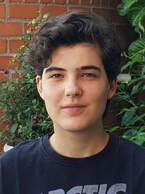|
In 1976, a military coup took place in Argentina. Although it was not the first military coup that the country had experienced since the turn of the century, this one was different: the military junta replaced the Constitution with a state Process of National Reorganisation and concentrated all judicial, legislative and executive power in their own hands. They also established the ‘Doctrine of National Security’, which found its comprehensive power in defining communism as the enemy of the Argentinian state. The military used this Doctrine to kidnap, torture and murder thousands of people. Nobody was spared. It is believed that the number of missing people (the so-called ‘disappeared’) was around 30,000. The majority of those who disappeared were young, between the ages of 16 and 35; 30% were women, and around three per cent of those women were pregnant. It is believed that 500 babies and children disappeared alongside their parents or were born in clandestine detention centres during those dramatic times.
When the disappearances started, relatives tried desperately to find out what had happened to their loved ones. Consulting government officials led nowhere until, under the leadership of Azucena Villaflor de De Vincenti, a group of mothers got together to demand answers. She came up with the idea of assembling in the Plaza de Mayo, a city square in Buenos Aires in front of the Casa Rosada (the ‘Pink House’), seat of the government, to urge President Videla, Commander in Chief of the army and de facto President of the country, to tell them where their disappeared children were being detained and under what charges. On 30 April 1977, fourteen Mothers gathered at the Plaza de Mayo for the first time and would later become known as the ‘Mothers of the Plaza de Mayo’. Fourteen days after, the Mothers were abducted and disappeared too. However, this did not deter the other Mothers. Amongst the Mothers, there were women who were also looking for their missing grandchildren. Their main question was: what had happened to the babies and children of their children who had been either kidnapped with their parents or born under captivity? Research has revealed that most of them had been handed over to political sympathisers of the junta and their families. To this day, many of the families of the ‘disappeared’ are still looking for the children taken away from them. In October 1977, they established the Association of the Grandmothers of the Plaza de Mayo, who demanded that the children should be returned to their legitimate families. Out of the 500 missing children, they have only been able to identify 130. After a conflict, many different issues come up. Sometimes, history is forgotten or rewritten; other times, there is a lack of accountability of those who have violated human rights. That is why organisations like the Grandmothers de la Plaza de Mayo are extremely important, both to preserve the memory of what happened and to persist in the defence of the rights of the ‘disappeared’. When the dictatorship ended in 1983, many mass graves were found. The Grandmothers pushed the government to get help from the Human Rights and Science Program of the American Association for the Advancement of Science and to follow its procedures to make exhumations reliable. This led to American scientists travelling to Argentina to train local scientists, who created the Argentine Forensic Anthropology Team (EAAF), an organisation which applies forensic sciences to investigations of human rights violations. They were also the driving force behind the creation of a National Genetic Data Bank, where the blood of relatives of the disappeared were deposited to ensure that, even after the death of the relatives, the disappeared could still be identified. Furthermore, these organisations conceptualised a new human right: the right to identity, by which states must respect the rights of children to their identity, including nationality, name and family relations. The Grandmothers pressured the Argentine government to lobby for the right to identity at the United Nations Working Group, which was drafting at that time a Convention on the Rights of Children. The right to identity is now part of the United Nations Convention on the Rights of the Child, ratified by 191 states. The Grandmothers also created a National Commission on the Right to Identity, which investigates all conflicts related to identity issues. The Grandmothers also fought against impunity and to obtain reparations. They made sure that when one child was identified, the kidnappers were brought to court. They worked with multiple human rights organisations to support legislation that offered economic reparations to the relatives of those murdered or disappeared. A remarkable aspect of the work they have done is their outreach for international solidarity and their involvement with international organisations. Because of the dictatorship in Argentina when the grandmothers started their association, they took their complaints to the international level from the very beginning. They realised that the image of the Argentine government was rapidly deteriorating abroad and they hoped that international pressure would help their cause. During their first two years, they contacted more than 150 international groups. Their influence in the Latin American movement for truth and justice can hardly be overstated. They took a leading role in the movement of the relatives of the disappeared. They were one of the founding members of FEDEFAM—Federacion Latinoamericana de Asociaciones de Familiares de Detenido-Desaparecidos (Latin American Federation of Associations for Relatives of the Detained and Disappeared)—which has lobbied extensively in the United Nations and the Organisation of American States to recognise forced disappearances as a crime against humanity. The Grandmothers met up with U.S. Secretary of State Madeleine Albright during her visit to Argentina in August 2000. Because of this meeting, the State Department announced in November 2000 that Albright had instructed the relevant U.S. personnel to identify—for declassification and release—documents related to human rights violations committed in Argentina during the years 1976 to 1983. The Grandmothers brought the charge that the military had elaborated a systemic plan to kidnap the children of the disappeared. In 1985, the junta leaders were absolved of the charged of abduction of children. Yet, in 1996, six grandmothers argued that the kidnapping of children had not just been the isolated work of a few individuals but a carefully crafted plan by the military commanders to punish the families of the subversives. Since then, several military commanders have been charged with the kidnapping of children. To conclude, the grandmothers have been essential in the process of reconstructing the Argentinian society. Through their history and their lived experience, they have been able to work together to make sure that what happened to them and their families is never repeated. Their work was recognised by being the first organisation that was granted the Sakharov Prize for Freedom of Thought in 1992 and they have supported other human rights associations. The Grandmothers de la Plaza de Mayo prove that victims’ organisations are crucial to put forward what the victims want and make sure that their experience is not forgotten and—what is more important – to ensure that it never happens again. The Grandmothers del la Plaza de Mayo told their stories and by pressuring to find the truth, they ensured that those responsible for atrocities did not win a victory over history.
0 Comments
|
Author
Laura is a Master's student in International Relations at the War Studies Department, King's College, London. She researched and wrote this article as part of the BizGees & War Studies Department Internship programme. |

 RSS Feed
RSS Feed

